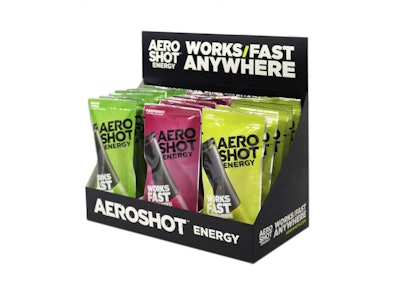Retailers have taken notice at how the economics of high-volume, fast-moving consumer goods have changed in recent years. Led by big box stores, these retailers have seen the wisdom of trimming one of their biggest costs of operation—store floor personnel hours spent restocking or “facing up” products on shelf.
Brand owners have scrambled to meet retailers’ requests with retail-ready solutions ranging from large corrugated boxes with loose packages to smaller, notched paperboard holders for stand-up display of carded packages—and all points in between. The specific type of retail-ready package for the job depends on the specific retail environment where the products will live, but there are many factors to consider.
1. Remember the primary market drivers. The trend toward more retail-ready packaging is driven by retailers’ desire to reduce store staff hours. The ideal retail-ready package is a shipping package that can be almost instantly shelf-ready. Understand the brief or the specific goal you need to meet completely, and ask for all marketing input upfront. Get shopping data from retailers, if possible, to learn what forms have been working for the retailer, and keep those in mind throughout the package development process.
2. Engage suppliers early. Always work closely with suppliers in order to optimize the retail product SKUs and features before starting the real project. Make sure you understand the customers’ requirements—all of them. Shelf dimensions, rate of sale, automated warehouse systems, and distance travelled all can have an impact on how successful any retail-ready package is. Even if you start with a previously successful structural design, still plan for lead time in sorting out problems along the way.
3. Mind your perforations. The type of perforation will affect the ease of tearing, and the design and placement of a tear-off part will affect the strength of the package. One best practice when designing retail-ready packaging is to double-check that your new packaging design will work with the current packaging equipment. A simple thing like a perforation pattern can end up right where a suction cup is supposed to pick up and place a package, which can cause major issues for something relatively small.
4. Maximize the experience for retailer staff. Keep it simple. Perform ethnographic research and carefully watch retailer staff interact with existing retail-ready packaging. Make the packaging intuitive for the stock person to display correctly. Too many parts and wordy instructions should be avoided. Instead, develop easy-to-follow graphic instructions as long as they don’t detract from the overall visual design. Construct a package that contains a reasonable quantity of product, that can be loaded in a single action, and that is easy to swap out and dispose of with minimal waste. When reasonable, make reloading possible even with some quantity of product still in the retail-ready packaging, to avoid stock-outs.
5. Maximize the experience for consumers. Always design with the consumer in mind. Make sure the packaging is not only easy to stock on shelf and looks great, but also that the consumer can remove the primary product package from the retail-ready packaging easily. With the short time you have to get the consumer’s buy decision, you can’t afford to be hard to pick up at the crucial moment of sale. Square-ness and perpendicularity are critical to a sturdy, stackable presentation, but avoid sharp corners and edges for customer safety and comfort when reaching into the retail-ready packaging.
6. Go the extra mile for marketing. Make it easy to see the primary product’s main claim to fame. Make sure the artwork fits the parameters required by the package and the equipment. In addition, the artwork must be repeatable with colors that can be readily and easily matched. A best practice is to buy a machine that is flexible enough to meet the consumers’—and marketers’—ever-changing needs. Think about how the retail-ready packaging will look as it sells down, with fewer packages on the shelf. Take advantage of opportunities to add branding and marketing messages that will mimic the primary package, delight with bold graphics, or reinforce a brand proposition.
7. Compromise to align goals. Retail-ready packages should be thought of holistically, as primary package design has an impact on secondary packaging and on pallet optimization. Reducing material thickness cuts costs, but a common pitfall is not having heavy enough carton weight, or strong enough seals, to hold the contents securely during shipping. Understanding the quality of overseas board is critical when designing a retail-ready package. Develop multiple mockups and test packages with drop tests and on actual shelves to confirm viability.
8. Invest in thorough design exploration. Let packaging designers do their job to prevent design by committee. Avoid “me-too” packaging strategies that dilute the brand. Start with the mandatory labeling elements on the retail-ready packaging first and then design around them, because starting with a graphic element first can be counterproductive. Retail-ready packages are highly marketing driven, so creativity in graphic package design tends to trump functionality. Look to other categories for inspiration. Finally, use a collaborative approach with production to design a functional package that is both eye-catching and easily automated.
9. Present a conscientious structure. Avoid odd shapes and complicated packaging that will not be seen as efficient by the retailer and the consumer. Avoid standard “stadium case” packaging that does not perform well on shelf. One pitfall is falling into something so specialized there is no flexibility in materials supply. Whenever possible, minimize the dimensional changes between SKUs and packaging. For instance, if you have a series of cartons for the same product but different counts, only change one dimension, which in turn could prevent changes in case dimensions.
10. Simplify the visual presentation. Maximize shelf presence without sacrificing package integrity. Limit the initial visual impact to one key message that shoppers will recognize. If you can get away with a single beautiful picture, even better. Use attention-getters such as “New,” “Improved,” “Special,” and “Better.” Point out a unique structure or innovative value-added opening function that might encourage consumers to pick up the package.
11. Don’t skimp on printing. Flexographic printing on corrugated and paperboard has improved in recent years, but make sure not to compromise the brand’s visual equity. Make sure brand impression still is strong and represents the brand in its best light, and that print registration stays within acceptable variances. And consider shelf wear and its impact on shelf appearance when choosing materials and finishes.
12. Sweat the details. In-the-field testing is almost a must to avoid failures with packaging that inhibits product from being picked off the shelves because of its bad appearance. If feasible, invest in ISTA certification. Use only certified materials for distribution in the geographic locations intended, and maintain records of objective evidence of certification. Double-check all retailer specifications, including pallet type, weight, height, materials, signage, etc. Consider quality control camera inspection to ensure the right materials are used and the right UPC code is present on every package. And plan ahead: Take into account all the potential variables, including the marketing department’s tendency to change the primary package size every year.



























